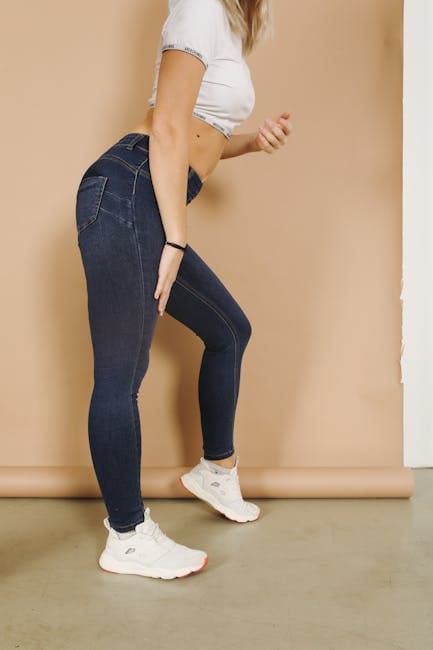How Tight Hip Flexors Contribute to Back Pain
Back pain is a common ailment that affects millions of people worldwide. While many factors can contribute to back pain, one often overlooked cause is tight hip flexors. Understanding the relationship between tight hip flexors and back pain can help you take the necessary steps to alleviate discomfort and improve your overall well-being.
What Are Hip Flexors?
The hip flexors are a group of muscles located at the front of the hip. These muscles include the iliacus, psoas major, and rectus femoris. They are responsible for flexing the hip, which allows you to lift your knees and bend at the waist. The hip flexors play a crucial role in maintaining proper posture and enabling a wide range of movements.
How Tight Hip Flexors Lead to Back Pain
Tight hip flexors can contribute to back pain in several ways. When the hip flexors are tight, they can pull the pelvis forward, causing an anterior pelvic tilt. This tilt can lead to an exaggerated curve in the lower back, known as lordosis. The increased curvature puts additional strain on the lumbar spine, leading to discomfort and pain.
Impact on Posture
Poor posture is a significant factor in back pain. Tight hip flexors can cause you to adopt a hunched or slouched posture, which can exacerbate existing back pain or even lead to new issues. Maintaining proper posture is essential for spinal health, and addressing tight hip flexors can help you achieve better alignment.
Muscle Imbalances
Tight hip flexors can create muscle imbalances in the body. When the hip flexors are overly tight, the opposing muscles, such as the glutes and hamstrings, can become weak and underactive. This imbalance can lead to improper movement patterns and increased stress on the lower back.
Statistics on Back Pain and Hip Flexors
According to the National Institute of Neurological Disorders and Stroke (NINDS), around 80% of adults experience lower back pain at some point in their lives. Additionally, a study published in the Journal of Physical Therapy Science found that individuals with tight hip flexors were more likely to experience lower back pain compared to those with flexible hip flexors.
Actionable Tips to Alleviate Tight Hip Flexors and Back Pain
Fortunately, there are several steps you can take to alleviate tight hip flexors and reduce back pain. Incorporating these actionable tips into your routine can help you achieve better flexibility and improve your overall comfort.
Stretching Exercises
Regular stretching is essential for maintaining flexible hip flexors. Here are some effective stretches to incorporate into your routine:
1. Hip Flexor Stretch: Kneel on one knee with the other foot in front, creating a 90-degree angle. Push your hips forward gently until you feel a stretch in the front of your hip. Hold for 20-30 seconds and switch sides.
2. Pigeon Pose: From a plank position, bring one knee forward and place it behind your wrist. Extend the opposite leg straight back. Lower your torso over your front leg and hold for 20-30 seconds. Switch sides.
3. Butterfly Stretch: Sit on the floor with the soles of your feet together and knees bent outward. Hold your feet and gently press your knees toward the floor. Hold for 20-30 seconds.
Strengthening Exercises
Strengthening the muscles around your hips can help balance muscle imbalances and support your lower back. Here are some exercises to consider:
1. Glute Bridges: Lie on your back with your knees bent and feet flat on the floor. Lift your hips toward the ceiling, squeezing your glutes at the top. Hold for a few seconds and lower back down. Repeat 10-15 times.
2. Clamshells: Lie on your side with your knees bent and feet together. Lift your top knee while keeping your feet together, then lower back down. Repeat 10-15 times on each side.
3. Planks: Hold a plank position with your forearms on the ground and your body in a straight line. Engage your core and hold for 20-30 seconds. Gradually increase the duration as you build strength.
Posture Awareness
Being mindful of your posture throughout the day can make a significant difference in reducing back pain. Here are some tips for maintaining proper posture:
1. Sit Up Straight: When sitting, keep your back straight, shoulders relaxed, and feet flat on the floor. Avoid slouching or leaning forward.
2. Use Ergonomic Furniture: Invest in a chair and desk that support proper posture. Adjust your chair height so that your knees are at a 90-degree angle.
3. Take Breaks: Avoid sitting for prolonged periods. Take regular breaks to stand up, stretch, and move around.
When to Seek Professional Help
If your back pain persists despite trying these tips, it may be time to seek professional help. A physical therapist or chiropractor can assess your condition and provide personalized treatment to address tight hip flexors and back pain. They may recommend specific exercises, manual therapy, or other interventions to help you find relief.
Conclusion
Tight hip flexors can significantly contribute to back pain by affecting posture, creating muscle imbalances, and placing additional strain on the lower back. By understanding the relationship between tight hip flexors and back pain, you can take proactive steps to alleviate discomfort and improve your overall quality of life.
Incorporate stretching and strengthening exercises into your routine, be mindful of your posture, and seek professional help if needed. With these strategies, you can work towards healthier hip flexors and a pain-free back.
Unlock Your Hip Flexors gives you a practical, easy-to-follow program – Click here!

